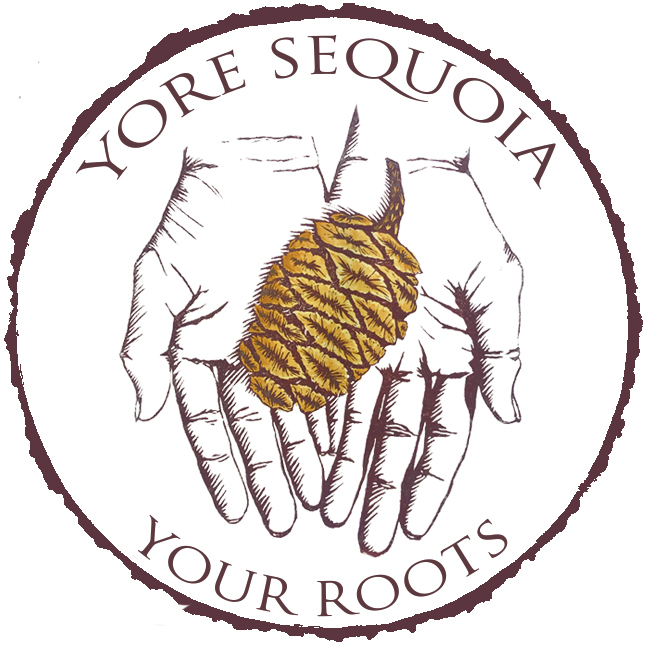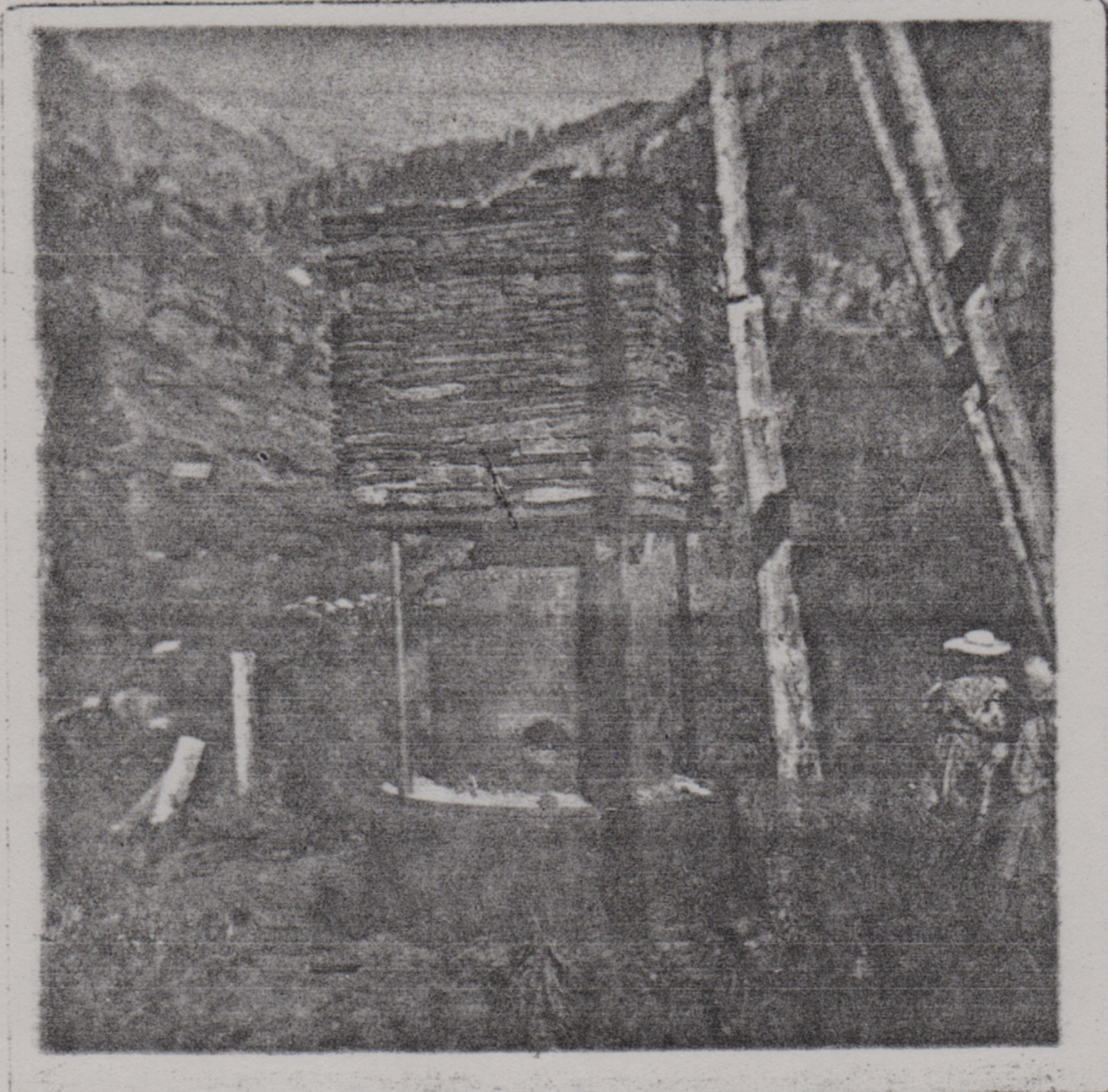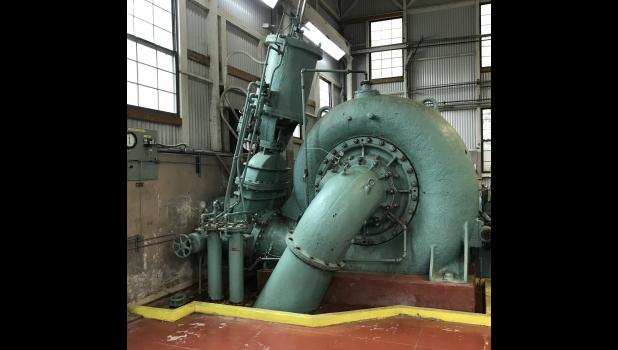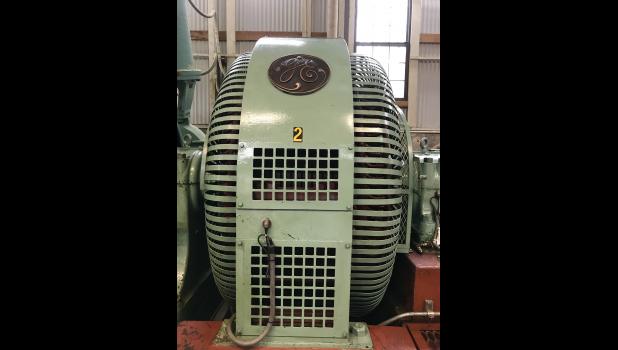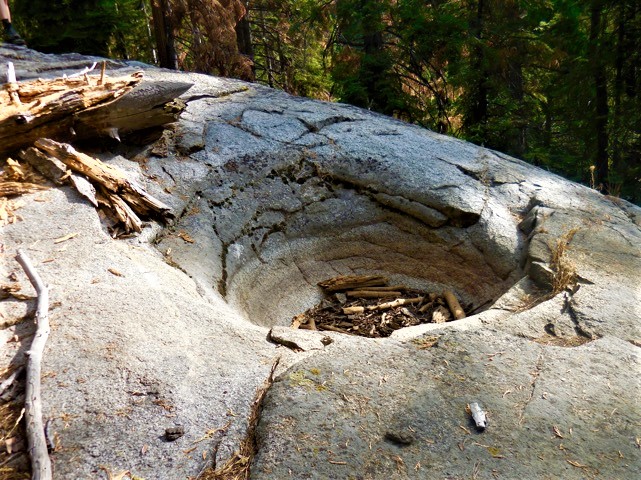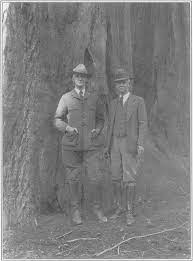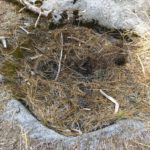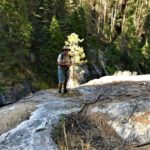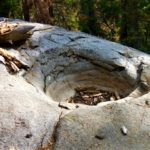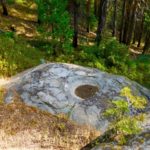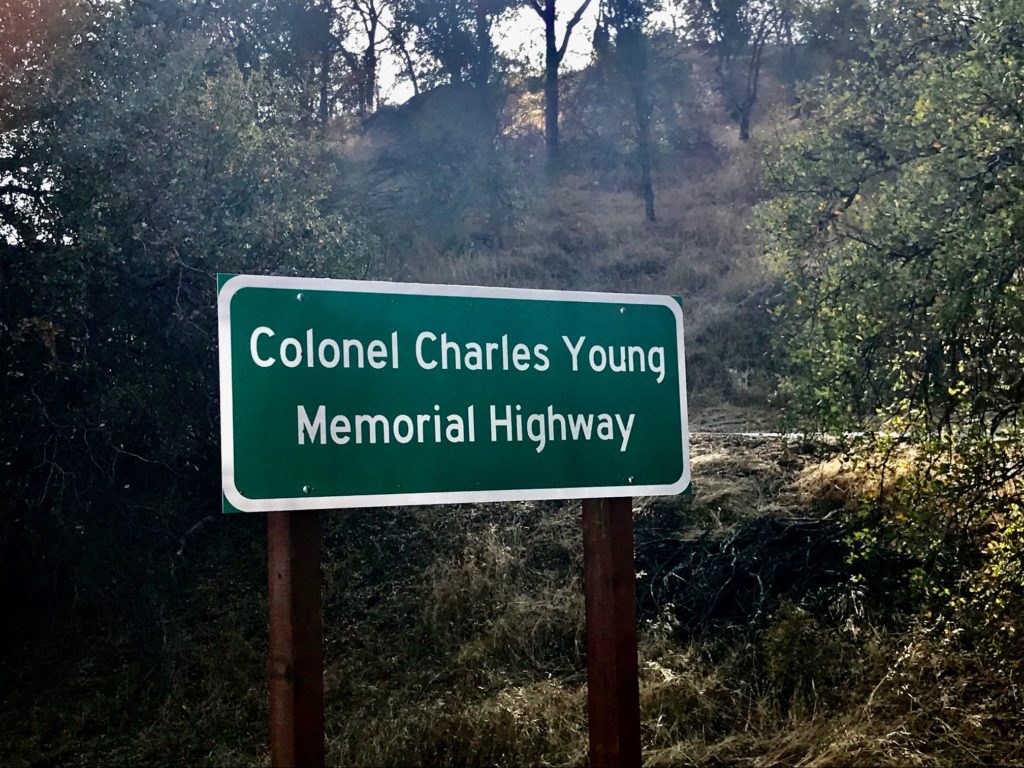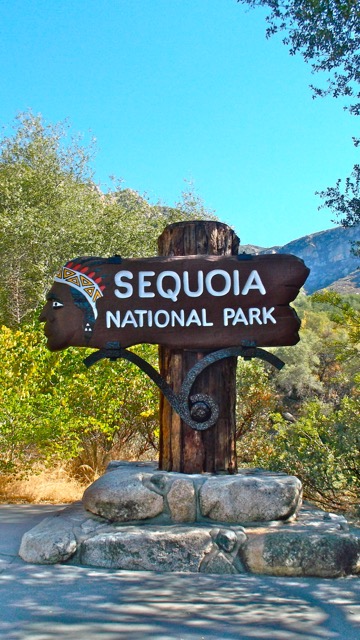
The historic entrance sign where nearly every visitor on a Sequoia Park adventure stops and takes the first park photograph of the day has been restored.
A compilation of two articles by John Elliott and The Kaweah Commonwealth staff, January and May 2018.
Nearly every visitor who enters Sequoia National Park via the Ash Mountain entrance for the first time pulls off at the turnout a quarter-mile beyond the gate to take a photo of Sequoia’s most-oft seen and photographed landmark: the historic Indian head sign. The iconic sign conjures wonderful memories for returning visitors and begins new memories for first-timers.
Carved in 1935, the mammoth sign was chiseled from a fallen giant sequoia that easily could have been 2,000 years old. The sculptor was George Muno, who was serving in the Civilian Conservation Corps at the time.
The image of the “Indian chief” was based upon the Native American profile depicted on the Buffalo nickel, first minted in 1913. The iconic sign evokes many aspects of American history from a famous American Indian to the visual stereotyping of American Indians, from Depression-era hard times to booms in tourism, from using the wood of a giant sequoia to the preservation of the Big Trees, to name a few of the more obvious contrasts that come to mind.
But even giant sequoias don’t last forever, especially ones that have been carved and painted.
In late November 2017, the 4′ high, 10’wide, 450-pound sign was taken down from its post and transported to the sign shop at Ash Mountain headquarters just up the road. For the next six months, until its remounting Wednesday, May 16, the sign’s restoration became the priority project for Bill Schenher, sign painter for Sequoia and Kings Canyon National Parks.
In nearly every step along the way, Schenher had to overcome obstacles and come up with some creative problem-solving. First, he had to file a restoration plan with the office of the keeper of the National Register of Historic Places. In 1978, the huge carving was officially listed as a historic landmark.
Its cultural and historical significance is obvious, not the least of which is that it was carved and installed in 1935 during the Civilian Conservation Corps (CCC) tenure in Sequoia National Park. In those days, Kings Canyon National Park had yet to be created, and the Grant Grove area was still called by its original name: General Grant National Park.
Schenher began the restoration by painstakingly stripping off the paint, numerous coats of veneer, and patching a number of places that had rotted away.
“The toughest part of the entire process was doing the reverse engineering to ensure the preservation of the sign’s historical composition and appearance,” Schenher said.
Next came the making of the new post that supports the sign.
“I don’t know how the old one was still standing,” Schenher said. “It was structurally unsound.”
A sequoia log was selected from the Moro Rock-Crescent Meadow Road area and fashioned into a post that now measures 38 inches in diameter and 10 feet tall. Schenher said he counted the rings on the log he used and the post piece was approximately 400 years old.
The last post stood for 50 years and the new one should last even longer, Schenher said. On Thursday, May 17, 2018, the cones and flagging were removed from along the highway that was keeping the turnout off limits until the sign work was completed.
Within minutes a procession of vehicles began to pull in and park visitors resumed doing what they have been doing for the past 83 years — snapping photos of the landmark entrance sign and making new Sequoia Park memories to last a lifetime.
